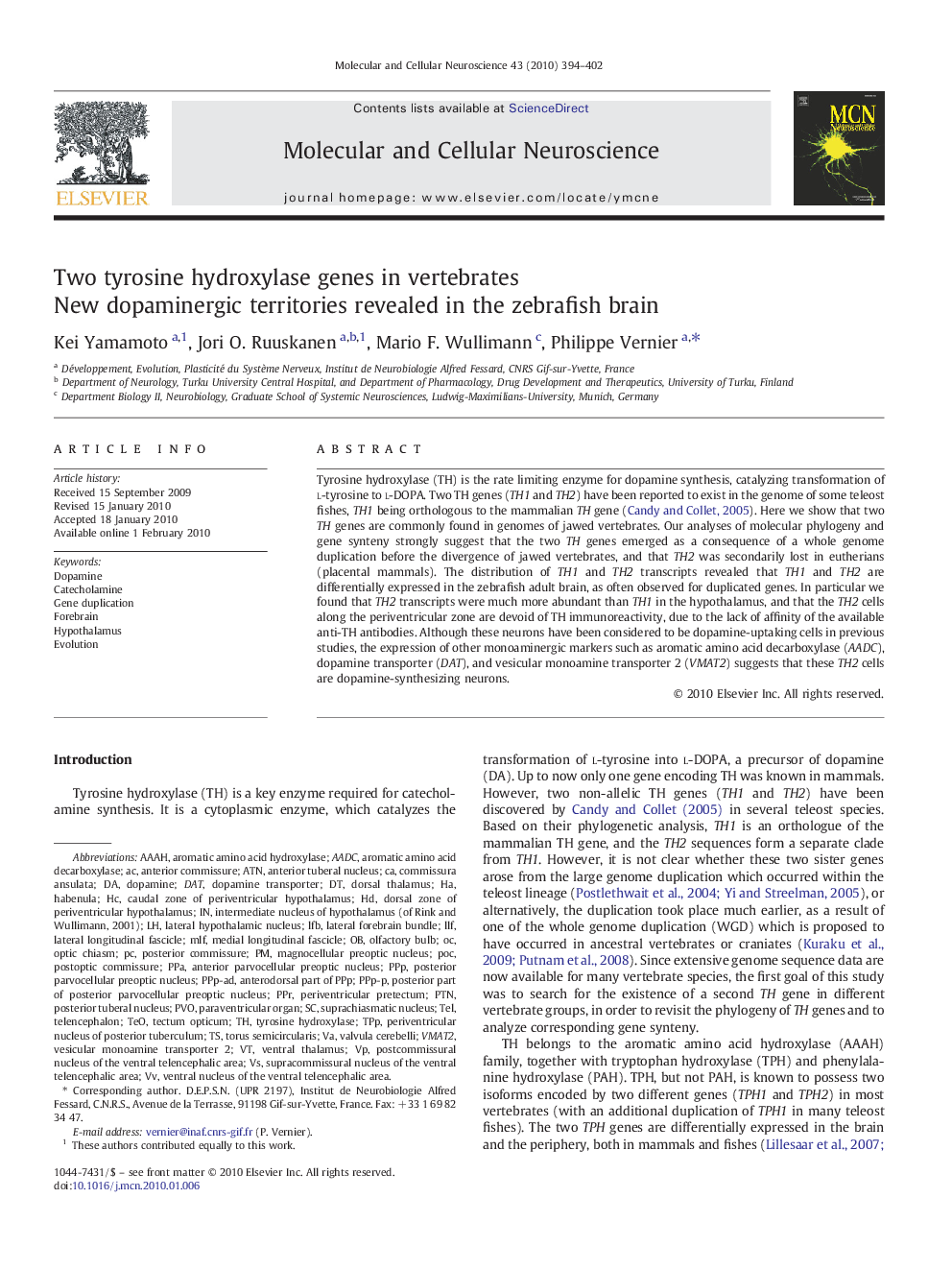| Article ID | Journal | Published Year | Pages | File Type |
|---|---|---|---|---|
| 2198792 | Molecular and Cellular Neuroscience | 2010 | 9 Pages |
Tyrosine hydroxylase (TH) is the rate limiting enzyme for dopamine synthesis, catalyzing transformation of l-tyrosine to l-DOPA. Two TH genes (TH1 and TH2) have been reported to exist in the genome of some teleost fishes, TH1 being orthologous to the mammalian TH gene ( Candy and Collet, 2005). Here we show that two TH genes are commonly found in genomes of jawed vertebrates. Our analyses of molecular phylogeny and gene synteny strongly suggest that the two TH genes emerged as a consequence of a whole genome duplication before the divergence of jawed vertebrates, and that TH2 was secondarily lost in eutherians (placental mammals). The distribution of TH1 and TH2 transcripts revealed that TH1 and TH2 are differentially expressed in the zebrafish adult brain, as often observed for duplicated genes. In particular we found that TH2 transcripts were much more abundant than TH1 in the hypothalamus, and that the TH2 cells along the periventricular zone are devoid of TH immunoreactivity, due to the lack of affinity of the available anti-TH antibodies. Although these neurons have been considered to be dopamine-uptaking cells in previous studies, the expression of other monoaminergic markers such as aromatic amino acid decarboxylase (AADC), dopamine transporter (DAT), and vesicular monoamine transporter 2 (VMAT2) suggests that these TH2 cells are dopamine-synthesizing neurons.
